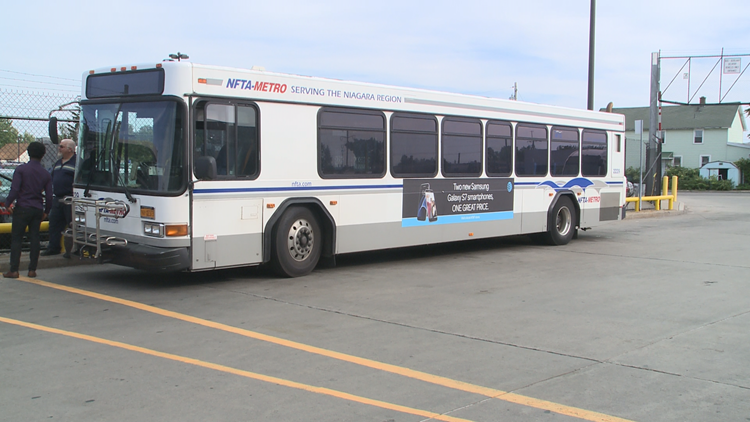ALBANY, N.Y. (AP) - New York City's subway system handles about 5.7 million riders every weekday, more than 10 times the combined daily ridership of all other public transportation systems in the rest of New York state.
Even though their ridership is nowhere near the Big Apple's, upstate New York's largest public transit face many of the same challenges their big-city counterparts at the Metropolitan Transportation Authority deal with on a regular basis, including aging infrastructure and increased demand for service.
But the upstaters face an added hurdle: getting more state funding at a time when the downstate transit woes get all the attention.
"It's always a big challenge for us to get on the playing field with the MTA being so big," said Thomas George, director of public transit for the Niagara Frontier Transportation Authority, which operates two airports, bus service and a commuter rail line for the Buffalo-Niagara Falls area.
George joined executives from other upstate public regional transit systems at the state Capitol recently to lobby for more funding at a time when billions of dollars are earmarked to fix the MTA's crumbling subway and commuter train infrastructure. Democratic Gov. Andrew Cuomo's $168 billion state budget proposal includes 1-percent increases for non-MTA transit, including the regional systems for Albany, Syracuse, Rochester and Buffalo.
Cuomo is proposing to spend $206.6 million on upstate transit, a $2 million increase, and another $321 million on downstate transit outside the MTA's jurisdiction, up by $8 million from the previous budget.
The upstate transit officials are seeking increases of $20 million for upstate and $30 million for downstate non-MTA systems. They brought a good news-bad news message to Albany to bolster their request. The good news: local economies are improving, especially in Buffalo. The bad news: local transit providers are struggling to meet growing demands for expanded services.
All but a handful of upstate counties have some form of public transit system, mostly buses. Erie County, which includes Buffalo, has the state's only other subway line, a light rail system that connects the city's downtown with its northern outskirts.
Officials in Buffalo say their 35-year-old Metro Rail needs improvements. The NFTA, which runs public transit in neighboring Erie and Niagara counties, also wants to expand Metro Rail another 6 miles northward into Amherst, a thriving suburb.
"It needs to be upgraded," said Michael Anthony Shelton, an Army veteran who uses the train nearly every day to get to his concessions job at the city's downtown NHL arena and to appointments at the Veterans Affairs hospital.
Transit agencies in such cities as Rochester and Albany say they also need more state help, specifically for upgrading their bus fleets and expanding service. Many older city residents who opt to remain in their homes are using public transit more, while millennials who prefer urban settings are doing the same, officials said.
On most days, weather permitting, Brendan Ryan, an engineer working in downtown Rochester, rides his bike 5 miles from his home to the office, a trip of about 20 minutes. On days when he has to take a bus, his commute can be 35 minutes or longer.
He rates the city's bus service "mediocre," with overcrowding and long wait times between buses his biggest complaints. Ryan said he would take the bus more often if service was better, and so would many of his fellow Rochester millennials.
Rochester's transit system "is not really useful for a lot of the citizens out here," said Jason Partyka, of Reconnect Rochester, a public transit customer advocacy group.
He said Rochester's current transit system is 40 years old and is based on outdated bus routes. Much has changed since the 1970s, when Eastman Kodak, Xerox and Bausch and Lomb employed tens of thousands. Most of those jobs are gone, and the city's population has fallen while the suburbs have grown.
"The system has to be redesigned to meet the needs of employers, seniors and millennials," said William Carpenter, chief executive officer of Rochester's Regional Transit Service and president of the New York State Public Transit Association. "We have a lot more demands than we used to have, but the funding isn't much different than we used to have."
(Copyright 2018 The Associated Press. All rights reserved. This material may not be published, broadcast, rewritten or redistributed.)



